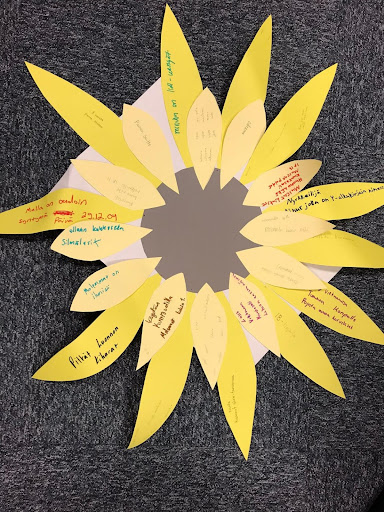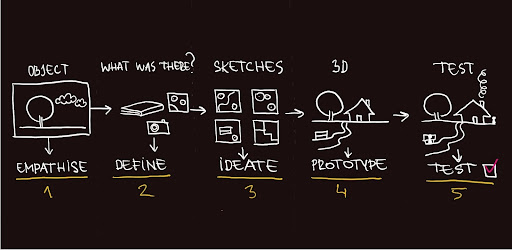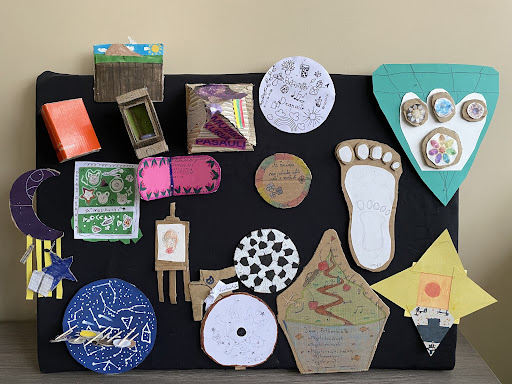DESIGN THINKING AND VISUAL THINKING AS METHODS OF LEARNING
“What is the interconnection between word and picture, picture and word, in terms of how we reflect upon our ideas?”

Design thinking and visual thinking offer tools for the educators to diversify their methods of teaching and engage learners in the process as active participants. The educator presents the tools and support for the classes but the learners do the work themselves.
Visualisation is a powerful tool for learning as it might often be easier to remember visuals than just plain text. It also enables others to understand more easily the vision that you have in your head. This is also why visual tools are used widely in the DT process.
Design thinking is a process that consists of 5 different stages: empathise, define, ideate, prototype and test.

Design thinking can be implemented in the classroom in multiple ways. You can allocate several lessons to go through the process thoroughly or you can take a shortcut and you can squeeze in all the stages within just one or two lessons – just adapt the process according to your needs.
DT can also be used to tackle problems in the classroom or the school community or help improve the well-being of the learners – and the educators! So it is not only a tool for teaching.
A few ideas on how to use DT process in education:
⭐”How could we have more sports activities in our school yard” in PE lesson.
⭐”How could we make our school building more beautiful” in an Art lesson.
⭐”How could we understand the history of our families in a better way” in History lesson.

The process is, above all, flexible, and thus finding the tools (or stages) that serve your purpose best can still generate great results from your learners – as long as you go out there and experiment something new.
The fun part of Design Thinking is that you can always use it to find new ways of teaching and learning or develop the process along the way.
